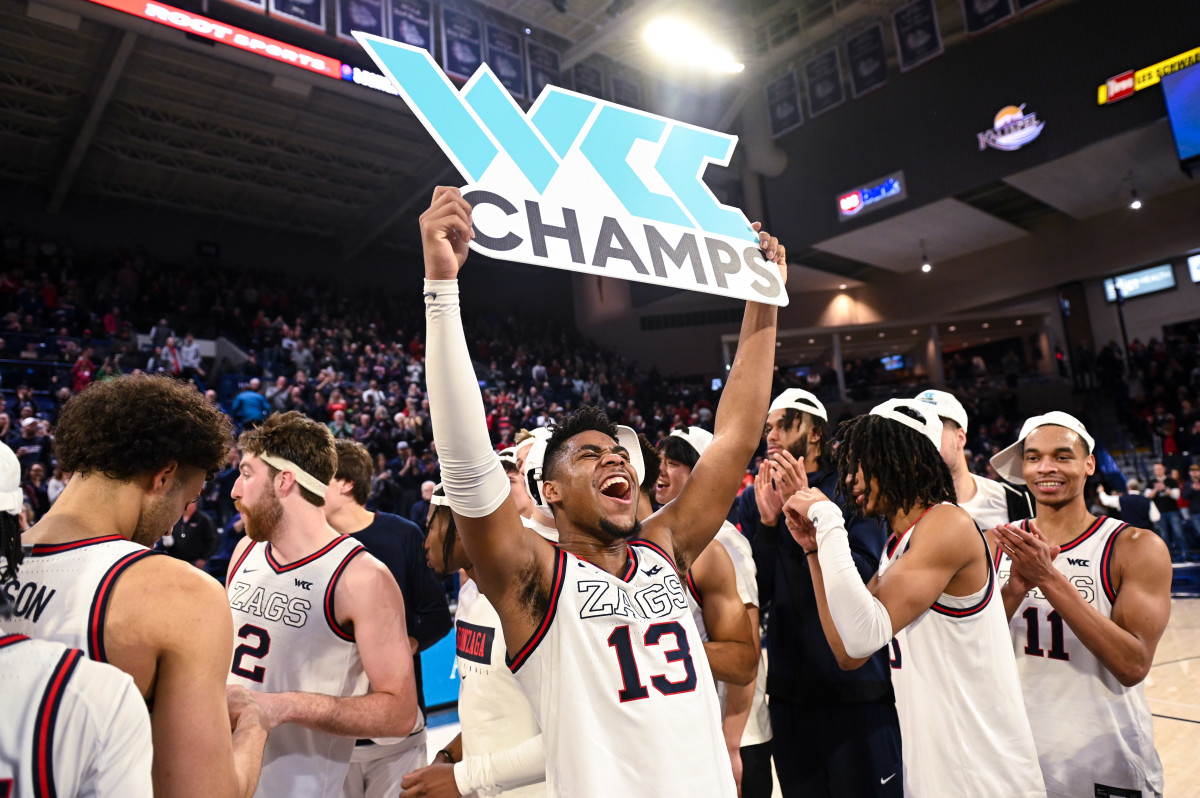How much money did Gonzaga men's basketball make from the 2023 NCAA Tournament?

Gonzaga men’s basketball has been the face of the West Coast Conference for a quarter of a century.
With 25 straight appearances in the NCAA Tournament, Gonzaga's consistency has established a national brand for the university while competing in a non-power five conference. While the rest of the nation’s bluebloods reap and share the benefits that come with high-major athletics, Gonzaga’s deep runs in the NCAA Tournament have benefited the WCC and its members greatly through revenue distribution.
The NCAA awards each team a “unit” for every game played during the NCAA Tournament excluding the championship game. The value of a unit changes over the six years that it's distributed to its conference, but Sportico estimates that each game in the 2023 NCAA Tournament was worth $2,001,400. Based on the NCAA’s distribution guidelines, that would mean unit payments start at about $342,000 next year and end with a unit payment of roughly $326,000 in 2029.
By reaching the Elite Eight this season, Gonzaga earned four units valued at over $8 million. Saint Mary’s brought in two units for advancing to the second round, bringing the WCC’s projected payout to $12 million over the next six years.
While most conferences opt for an equal split among its members, including those who didn’t make the tournament, the WCC rewards its most successful teams with a larger slice of the pie — an equal opportunity system that former Gonzaga Athletic Director Mike Roth helped establish.
In 2019, when Gonzaga was being heavily courted to join the Mountain West Conference, Roth and the WCC worked together to sweeten the pot for the conference’s most successful programs.

“It was a unique situation,” Roth said to the Associated Press in 2019. “We had one conference that wanted us, and one conference that wanted to keep us. So, welcome to America.”
Under the terms of the agreement, the conference divides the first unit of tournament revenue equally among the 10 members but gives the teams a larger portion of any additional units they generate by winning games. That means the Zags and Gaels will be distributed more revenue for their respective runs in the tournament than teams like Loyola Marymount, for example, which hasn’t made it to the NCAA Tournament since 1990. Since 1997, Gonzaga has generated 64 total units for the WCC, while the nine other teams in the league have contributed a combined 47 in that same span.
Merit-based in a sense, the WCC’s unique system puts the conference in a position where it's better off when more teams make the tournament rather than just having one team make a deep run. For example, if Gonzaga advanced to the Final Four (which is worth five units) as the lone representative from the WCC, the school would receive a greater chunk of revenue. But if three teams made the tournament and brought in a combined six units, the rest of the conference would be in better shape because there are more first-round units to share.
Other conferences, however, treat their members equally regardless of performance. Upset-minded Princeton, a 15-seed that advanced to the Sweet 16 in 2023, will receive the same revenue cut as the 7-22 Columbia Lions who went 2-12 in Ivy League play.
Conference realignment creates interesting scenarios for teams that will be moving conferences in the next few years. Florida Atlantic’s improbable Final Four run brought in $10 million for C-USA, but because the Owls are leaving for the American Athletic Conference starting this summer, they’ll instead have to share $8 million among 13 teams (six of which are newcomers as well) instead of reaping the benefits they earned themselves. Units that a team earns in the NCAA Tournament stay with their current conferences.
That’s something for Gonzaga to consider when talking with the Big 12 and other Power Five conferences. The Big 12 brought in 16 units in the 2023 NCAA Tournament to share with 14 teams over the next six years (though its three new members will most likely not receive an even split right away). That won’t compare, however, to the nearly $30 million its schools will receive from the conference’s lucrative TV deal with Fox and ESPN that was signed last October.
March Madness revenue doesn’t do much for Power Five schools that receive greater benefits from TV deals and college football. Last spring, the NCAA distributed $74 million to conferences that have contracts for their champions to participate in the Orange, Rose or Sugar Bowls — aka, the Power Five.
As a non-football school in a league that’s heavily dependent on tournament units, Gonzaga’s current position in the WCC — a conference that gives greater rewards to its winners — is very unique and most likely not replicable elsewhere.
